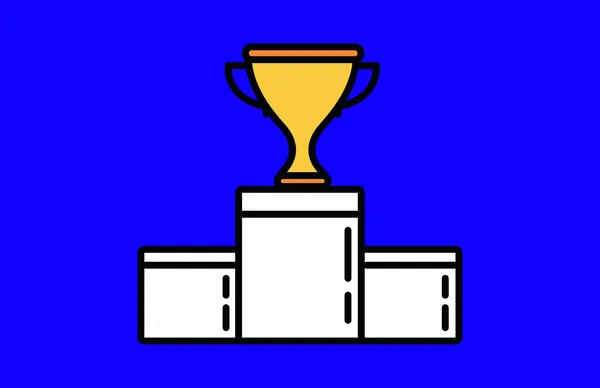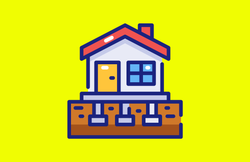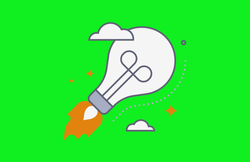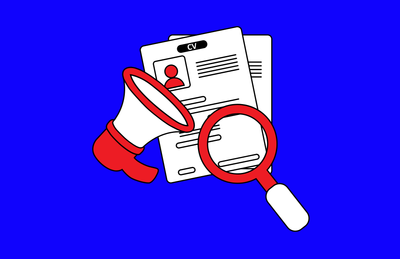On this page
It’s unlikely that you’ll be the only competitor in any market. Whether you’re up against spreadsheets, sleep, or a comparable solution, competition exists in many forms. This is where positioning comes in. We need to figure out how to compete and which stories will resonate.
In product marketing, we frequently focus on feature-by-feature comparisons, looking for gaps in a competitor’s offering. We might position our product as having more features, making it a "premium" option versus a simplified, out-of-the-box product that's easier to deploy. But positioning should go beyond features, tapping into customer pain points, emotions, and situational needs to create a compelling reason to buy.
An example from outside the tech world illustrates this clearly. When traveling in Spain, I saw two tourist services that, at first glance, seemed to be in direct competition until I realized they were capturing entirely different groups of customers.
A tale of two competing products
On a recent trip to Toledo, Spain, I did something I’d never done before: I took the red tourist bus. I was on a day trip from Madrid and only had a few hours to explore the city. My plan was to walk the entire city, following a map from an aptly titled blog, “One Day in Toledo.”
The big red bus
I arrived at Toledo train station at 9am, fully prepared, with my most comfortable sneakers on, for the uphill walk into the walled city of Toledo. But I quickly changed my mind after overhearing the spiel from the representative from City Sightseeing. She laid out the offer: hop on and off buses around the city's outskirts, a stop at the viewpoint for photos, a guided tour and a return bus to the train station at a set time. Without overthinking, I booked myself a 35 Euro ticket. It seemed expensive, but I was sleep-deprived and cold, and the tourist sites weren’t open till 10am. Plus, the red bus promised something that would be difficult to do on foot – a stop at the famous panoramic viewpoint Mirador de las Valle, which seemed like an excellent way to start the day.
Was the bus overpriced? Yes. Could I have grabbed a taxi to the viewpoint? Yes. So why did I make this snappy decision? Convenience. The city sightseeing representative was in the right place at the right time. And it gave structure to my day and peace of mind that I wouldn’t miss my train later.
After a bus trip around the city walls, which provided some stunning vantage points, I was dropped off right outside the Alcazar, the grandest building in the city. While there, I noticed another tourist service: a little train. I felt bad because the train was empty; the city sightseeing bus had picked up all the tourists from the station earlier.
The little tourist train
After a wonderful day walking through windy streets, learning some facts from the tour and consuming a cerveza and traditional Carcamusas stew, I was ready to leave. I rushed back to my pickup spot to get the 4.30pm bus back to the station and saw people fighting to get on the tourist train. They were frustrated that they’d have to squeeze onto the narrow seats. And I realized the train company had successfully captured a completely different audience. With its smaller footprint, it could easily transport people through the narrow streets of Toledo. It appealed to people who’d been walking all day and got tired, those who couldn’t walk through the windy streets like young kids or others who'd reached the city late. Plus, the 9 Euro ticket made it much easier to justify.
My visit to Toledo was delightful. A UNESCO World Heritage site known as the City of Three Cultures (its marketing tagline), it’s a fascinating mix of architecture. But since this is a blog about marketing rather than travel, we’ll get back to that.
Competing on convenience, value, or emotion
At first glance, the red tourist bus and the little wooden train might seem to be in direct competition. But in reality, they were positioned for entirely different customer needs. The bus targeted early arrivals who valued convenience, structure, and peace of mind. At the same time, the train catered to those who arrived later who had already walked for hours or were looking for a budget-friendly option.
Considering that Toledo gets three million visitors each year, and many of them spend a limited amount of time in the city, there’s room for both.
This is a perfect example of strategic positioning, where companies don't just compete on features but also on their customers' situations and feelings at the moment of purchase. Whether you're selling B2B software, professional services, or consumer-focused products, it’s essential to understand why and when your target customers buy.
Purchasing decisions often fall into three categories: convenience, value or emotion.
Convenience
Like me, buyers value their time and want a hassle-free purchasing experience. Can they quickly see a demo, buy directly online or reach someone from the company with questions? Will the product easily integrate with their existing tools and workflows?
The red bus appealed to those seeking structure, and peace of mind. Tourists arriving early in the day, often unfamiliar with the city, wanted a plan that ensured they saw the key attractions without stress, including a guaranteed ride back to the train station, a set itinerary, and a comfortable experience.
In B2B this convenience could represent a hands-on integration and migration plan to transfer all existing data into the new platform. Alternatively, it might mean being able to purchase a solution and learn how to use it entirely online without needing to speak to anyone (product-led sales). Companies like Canva, Slack, Notion and ChatGPT have made their products extremely easy to learn, try and then buy.
Value versus perceived worth
Affordability plays a significant factor in decision-making. Sometimes, it’s about strict budgets; other times, it’s about the perceived value and whether you feel you’re getting a good deal. The return on investment (ROI) that a customer anticipates also influences how much they're willing to pay.
At just 9 Euros, the tourist train was a manageable, justifiable expense, especially for those who discovered it later in the day or larger groups and families. Tourists gained a quick, practical solution to their immediate problem.
In B2B, this is similar to how freemium products or pay-as-you-go pricing appeal to businesses that need an immediate, cost-effective solution. For example, QuickBooks offers affordable, easy-to-use accounting software for small businesses with a low-cost entry point and self-service setup. Meanwhile, NetSuite is a premium ERP (enterprise resource planning) system for mid-to-large businesses. Although it costs significantly more and is far more complex, large companies choose Netsuite because it has a full suite of financial and e-commerce tools, including advanced workflows, custom reporting, and inventory management.
Emotional needs and fear of failure
Many B2B purchases are driven by risk mitigation, trust in a brand, and decision-maker confidence rather than features. Buyers often ask themselves:
- Will this purchase deliver on its promises, or could I get in trouble if it doesn’t?
- Will choosing this solution elevate my status within the company (or my industry)?
- Will it bring relief from recurring frustrations like missing data, accounting errors, or hours of manual work?
The red bus and the tourist train both solved a problem: transportation around hilly Toledo. But they targeted customers at different emotional stages (structured planning versus tiredness).
This mirrors how established B2B brands win deals by offering predictability and reliability, making them a safe choice for risk-averse decision-makers. Companies often choose a big brand name over a smaller startup because it feels safer. That could mean picking Amazon Web Services (AWS) over a smaller cloud provider or McKinsey’s consulting services because of its reputation, even when lower-cost alternatives exist.
How to position your product strategically
Here are some considerations when positioning your products or services:
- Identify your customer’s situation: Are they seeking efficiency, cutting costs, avoiding risk, or ensuring compliance? The stage they’re at in the buying journey, the industry culture and the persona type all influence decisions. Are you appealing to a technically savvy audience who are happy to learn on the job, or does your target market require handholding? Conducting interviews as part of a win-loss program will help you better understand your customers' needs.
- Define your competitive advantage: Are you the premium, convenient solution (like the red bus) or the flexible, budget-friendly option (like the little train)? Do you compete on scalability, superior customer support, or ease of implementation and simplicity?
- Optimize your sales strategy: Consider where and when you’ll capture your audience. The red bus won customers by being at the train station first. The little train won customers who needed a break later in the day. In B2B, capturing leads early in the research phase (content marketing or hosting events) versus providing a solution at the point of frustration (targeting high-intent keywords with ads or offering free trials) can make all the difference.
Final thoughts: Why positioning matters more than features
The red bus charged nearly four times as much as the little train, not because it provided a vastly superior service but because of its sales strategy and positioning. The lesson? B2B customers don’t always purchase the "best" product. They buy what fits their immediate needs. In my case, I was cold and tired and didn't want to think too much.
When positioning your own product, don’t just focus on features. Consider when, where, and why your audience buys. Those factors usually matter more than the product itself.








